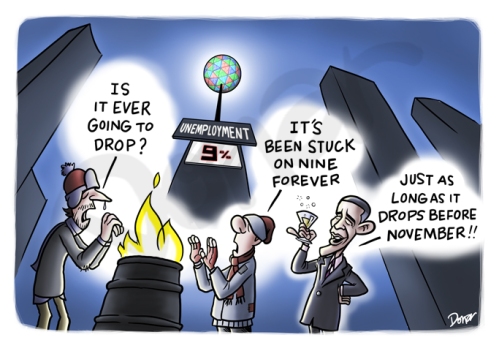High Real Unemployment Data Reflect Poorly On Obama
Posted 02/17/2012 06:42 PM ET
Economy: The media machine that desperately wants Barack Obama re-elected has turned its focus on what it says are good unemployment numbers. The truth, though, is the job climate in America is miserable.
While the media and the administration portray the most recent jobs number — 8.3% unemployment — as good economic news, more sober minds understand what's really going on. The facts show a jobs slump that should not get an incumbent president re-elected.
Sure, the jobless rate is falling. But according to the Congressional Budget Office, we are going through the longest stretch of high unemployment since the Depression. The rate has been higher than 8% since February 2009, the month after Obama took office.
And, says the CBO, it is expected to stay above 8% through 2014.
Even worse for an administration straining to make the case that it deserves to be around for another four years is the real unemployment rate. It's not 8.3%, but closer to 15%, a figure that reflects those who "would like to work but have not searched for a job in the past four weeks as well as those who are working part time but would prefer full-time work," says the CBO.
Another White House problem comes from this in the CBO report: "The share of unemployed people looking for work for more than six months — referred to as the long-term unemployed — topped 40% in December 2009 for the first time since 1948, when such data began to be collected; it has remained above that level ever since."
The CBO data aren't isolated. Gallup reports that its unemployment rate based on weekly surveys stands at 9%, while underemployment is at a hefty 19%.
Also threatening Obama's re-election offensive is the nation's shrinking labor force (see chart). Many laid-off workers, frustrated by grim prospects, have stopped looking for jobs and are no longer in the labor pool.
That makes the jobless rate look better, as that number is a percentage of the labor force, not the overall national population. But those jobless Americans are real people who will cast real votes in November.
The trouble is fixing these facts in voters' minds. They need to know the full truth, not the half-truth the media and the White House feed them.



